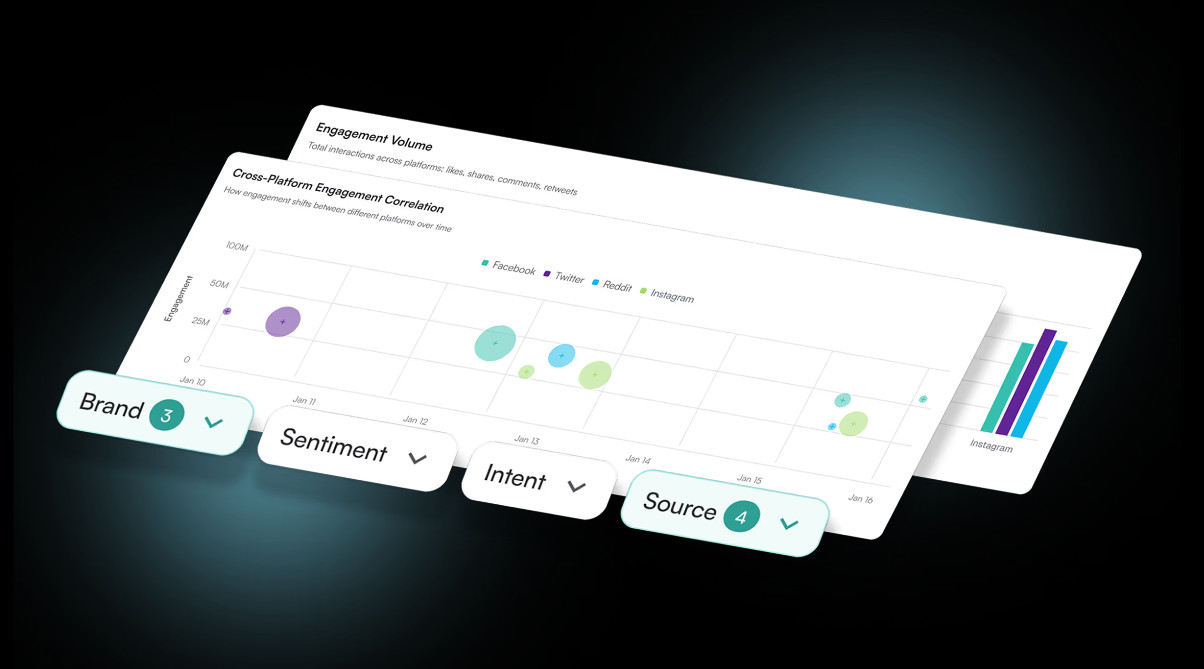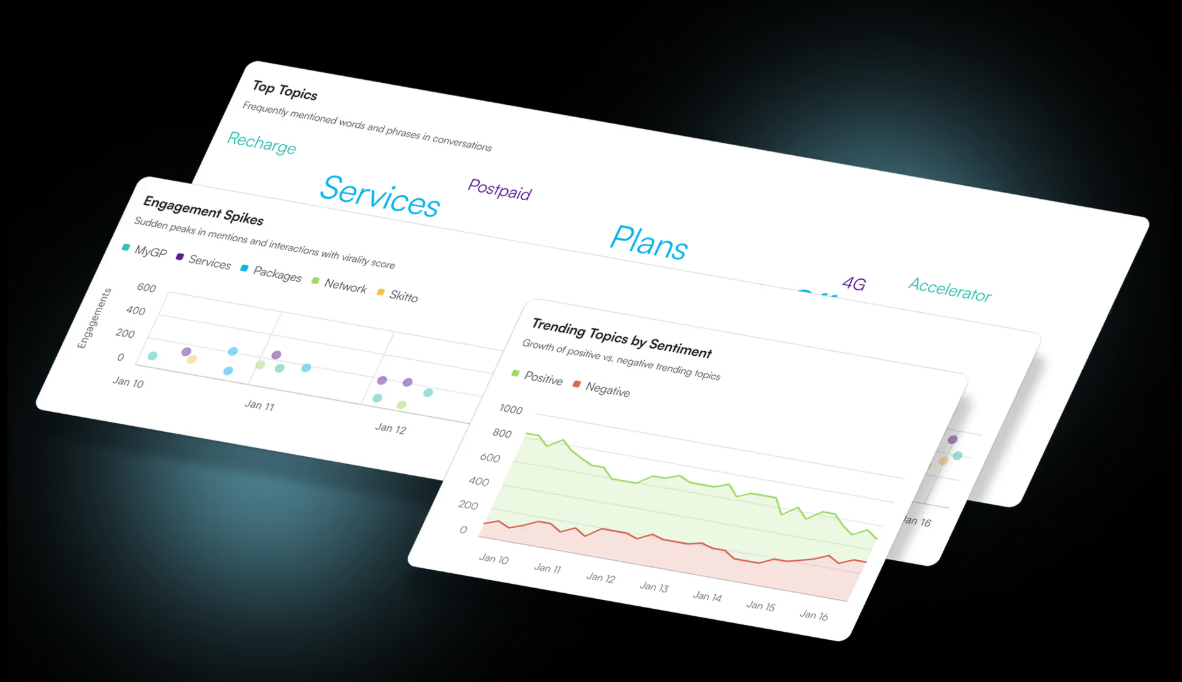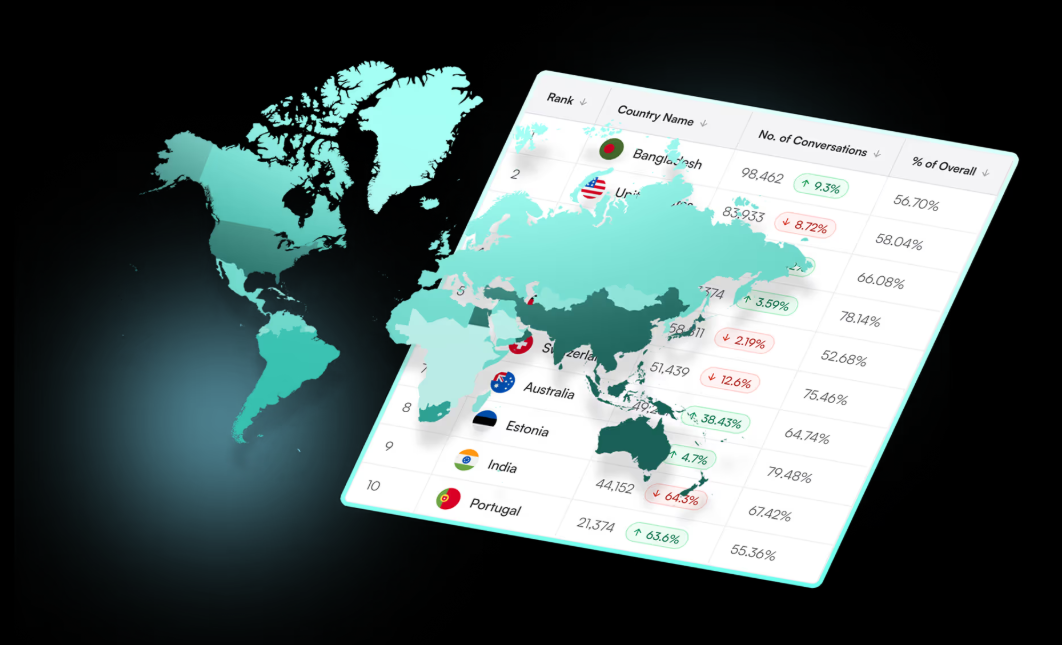We are excited to announce our $2M seed round led by Joa Capital.
Read Now

October 19, 2025
Fabiana Binte Mesbah
In today’s data-saturated world, listening isn’t enough; you need to understand. Imagine being able to tap directly into the emotional pulse of your audience. You could figure out what they love, hate, or hope for without sifting through endless data. That’s why sentiment analysis has become a cornerstone of modern business strategy. By analyzing emotions behind text, speech, and even visual content, it reveals what people truly feel about brands, products, and experiences.
The use cases of sentiment analysis in 2025 prove that technology has matured, moving beyond keyword spotting into context-aware, multimodal systems. Below, we’ll break down the impacts of customer sentiment analysis and why it matters for businesses navigating fast-changing markets.
Customer conversations happen across dozens of platforms, and often outside a brand’s owned channels. With customer sentiment analysis, organizations can monitor these mentions in real time and detect sudden spikes in negative emotions.
This early warning system is critical for heading off social media crises. In fact, brands using real-time sentiment dashboards see a drop in negative user sentiments by more than 30% in just six months.

The link between customer sentiment and loyalty is clear. A recent study found that 83% of companies using sentiment analysis report higher customer satisfaction while 62% of companies report stronger retention rates within the first year.
By identifying pain points in reviews, support tickets, and feedback forms, businesses can act quickly to improve experience. This ultimately keeps customers engaged and sticking around for longer.
Sentiment data is equally powerful for creative teams. By examining how people respond emotionally to campaigns, brands can adjust their messaging in near real time.
For example, the Atlanta Hawks basketball team leveraged sentiment analysis to refine its digital outreach. The result? A 127% increase in video views and 170% growth in audience engagement over just three months.
Sentiment analysis in 2025 isn’t only limited to text. Advances in multimodal AI allow systems to evaluate tone of voice, facial expressions in videos, and even image content for emotional context. This opens up new opportunities, such as:
Sentiment analysis is increasingly predictive, not just descriptive. Researchers recently demonstrated that analyzing Twitter sentiment could forecast fashion trends with 78.35% accuracy, especially in accessories and streetwear categories.
In e-commerce, AI-driven sentiment analysis can help to predict customer behavior, improving personalization and boosting engagement. These can guide product launches, merchandising, and inventory decisions.

Businesses with multiple branches such as restaurants, retailers or service outlets can utilize sentiment analysis to compare performance across regions. By aggregating customer reviews and feedback, managers can spot which outlets underperform and address issues locally while maintaining a unified brand voice.

Sentiment data also plays a major role in long-term strategy. Beyond brand and satisfaction, sentiment analysis is influencing big-picture business decisions. Organizations combining feedback across channels see 67% more accurate predictions of market trends compared to those relying on one source. This enables strategic, evidence-driven planning, and helps businesses stay a step ahead.
Why Sentiment Analysis in 2025 Marks a Turning Point
The sentiment analytics market is expanding rapidly, projected to hit $11.4 billion by 2030 at a CAGR of 14.3%. Thai growth is fueled by three factors:
The use cases of sentiment analysis in 2025 span every part of business, from safeguarding brand reputation to predicting tomorrow’s fashion trends. Sentiment analysis has evolved from a niche analytics tool to an essential part of competitive strategy and in 2025, its influence is only accelerating.
As customer voices grow louder across digital channels, organizations that invest in understanding customer sentiment through powerful social listening tools like DeepDive will stay ahead of the curve.
Discover How Audience Intelligence can help your brand grow